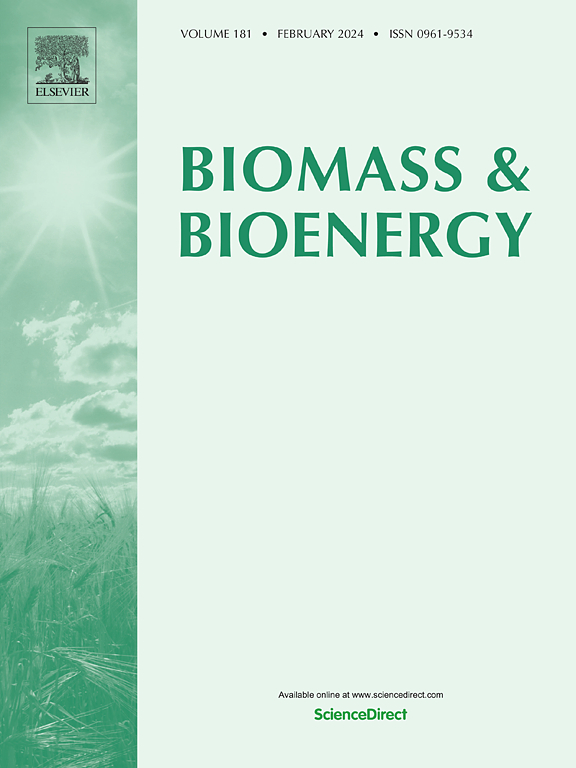短轮伐期木本作物用于生物能源生产的战略优化
IF 5.8
2区 生物学
Q1 AGRICULTURAL ENGINEERING
引用次数: 0
摘要
本文章由计算机程序翻译,如有差异,请以英文原文为准。

Strategic optimization of short-rotation woody crops for bioenergy production
Given the increasing focus on renewable energy and the wood-based composites industry's growth, the utilization of solid biomass has risen significantly over the past decade. Forestry and timber processing residues represent the primary and most cost-effective sources of solid biomass globally. However, alternative supply sources, such as short-rotation woody crops (SRWCs), are expected to play a larger role in biomass production, particularly on marginal lands unsuitable for food cultivation.
This paper assesses the economic viability of biomass cultivation for bioenergy purposes by addressing the optimal design and planning of a biomass-to-bioenergy supply chain that considers feedstock sourced from both short-rotation coppices and logging and mill residues. We develop a novel mixed-integer linear programming model to facilitate strategic decisions regarding forest stand establishment and management, as well as the locations and capacities of bioenergy plants. The model determines the optimal timing for crop planting and harvesting, along with the optimal number, location, and size of bioconversion facilities, and the material flows between supply and demand locations.
The applicability of the optimization model is demonstrated by solving a case study in the Mesopotamia Region of Argentina, which hosts the largest and most important forest-industry cluster in the country. A sensitivity analysis is conducted to evaluate the impact of various parameters on the optimal supply chain configuration. The results reveal a strong relationship between heat demand and idle capacity in a cogeneration plant, indicating that this factor affects project profitability more significantly than reductions in power prices.
求助全文
通过发布文献求助,成功后即可免费获取论文全文。
去求助
来源期刊

Biomass & Bioenergy
工程技术-能源与燃料
CiteScore
11.50
自引率
3.30%
发文量
258
审稿时长
60 days
期刊介绍:
Biomass & Bioenergy is an international journal publishing original research papers and short communications, review articles and case studies on biological resources, chemical and biological processes, and biomass products for new renewable sources of energy and materials.
The scope of the journal extends to the environmental, management and economic aspects of biomass and bioenergy.
Key areas covered by the journal:
• Biomass: sources, energy crop production processes, genetic improvements, composition. Please note that research on these biomass subjects must be linked directly to bioenergy generation.
• Biological Residues: residues/rests from agricultural production, forestry and plantations (palm, sugar etc), processing industries, and municipal sources (MSW). Papers on the use of biomass residues through innovative processes/technological novelty and/or consideration of feedstock/system sustainability (or unsustainability) are welcomed. However waste treatment processes and pollution control or mitigation which are only tangentially related to bioenergy are not in the scope of the journal, as they are more suited to publications in the environmental arena. Papers that describe conventional waste streams (ie well described in existing literature) that do not empirically address ''new'' added value from the process are not suitable for submission to the journal.
• Bioenergy Processes: fermentations, thermochemical conversions, liquid and gaseous fuels, and petrochemical substitutes
• Bioenergy Utilization: direct combustion, gasification, electricity production, chemical processes, and by-product remediation
• Biomass and the Environment: carbon cycle, the net energy efficiency of bioenergy systems, assessment of sustainability, and biodiversity issues.
 求助内容:
求助内容: 应助结果提醒方式:
应助结果提醒方式:


